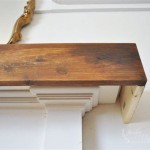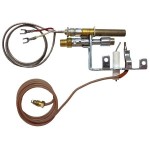```html
Fireplace Insert: Enhancing Your Home Heating and Aesthetics
A fireplace insert is a self-contained heating appliance designed to be installed directly into an existing masonry or factory-built fireplace. It offers a significant upgrade in heating efficiency, aesthetics, and safety compared to traditional open fireplaces. Fireplace inserts are available in a variety of fuel types, including wood, gas, and electricity, and come in various sizes and styles to suit different homes and preferences. Choosing the right fireplace insert involves careful consideration of factors such as heating needs, home décor, and budget.
Traditional open fireplaces, while visually appealing, are notoriously inefficient at heating a home. A significant portion of the heat generated escapes up the chimney, resulting in a negative heat gain, meaning the fireplace is actually drawing heat out of the room. Fireplace inserts, on the other hand, are designed to maximize heat output and minimize heat loss. They feature a closed combustion system that effectively burns fuel and distributes heat into the room, providing a much more efficient and cost-effective heating solution. This is achieved through features like blowers that circulate heated air and insulated fireboxes that retain heat.
Beyond improved heating efficiency, fireplace inserts offer enhanced safety features compared to open fireplaces. They prevent sparks and embers from escaping into the room, reducing the risk of fire hazards. The closed combustion system also minimizes the release of smoke and creosote into the home, improving indoor air quality and reducing the risk of chimney fires. Installation of a fireplace insert often involves professional inspection and installation, ensuring proper venting and adherence to safety codes.
Understanding the Different Types of Fireplace Inserts
Fireplace inserts are categorized based on the type of fuel they use: wood, gas, and electric. Each type offers distinct advantages and disadvantages in terms of heating performance, installation requirements, and operational costs.
Wood Fireplace Inserts: Wood inserts provide a traditional and authentic fireplace experience. They burn wood fuel, offering a natural and renewable heating source. Wood inserts typically have higher heat output capabilities than gas or electric inserts, making them suitable for heating larger areas. However, they require manual loading and stoking of wood, as well as regular ash removal. Proper ventilation is crucial for wood inserts to ensure safe and efficient combustion and to prevent the buildup of creosote.
Gas Fireplace Inserts: Gas inserts offer convenience and ease of use. They typically operate on natural gas or propane, providing a consistent and controllable heat source. Gas inserts can be turned on and off with the flip of a switch or the use of a remote control. They require less maintenance than wood inserts and produce minimal ash. Installation involves connecting the insert to a gas line and ensuring proper venting. Gas inserts are often more aesthetically versatile, offering a range of flame styles and decorative options.
Electric Fireplace Inserts: Electric inserts are the simplest to install and operate. They require no venting and can be plugged into a standard electrical outlet. Electric inserts provide supplemental heat and create a visual effect of a burning fire. They are often the most affordable option upfront. While electric inserts offer convenience and ease of use, they typically have lower heat output capabilities compared to wood or gas inserts and may not be suitable for primary heating purposes.
Key Considerations When Choosing a Fireplace Insert
Selecting the right fireplace insert involves a careful evaluation of several key factors, including heating needs, fireplace dimensions, fuel availability, and budget. A thorough assessment of these factors will ensure that the chosen insert meets the specific requirements of the home and provides optimal heating performance and satisfaction.
Heating Needs and Room Size: The size of the room or area to be heated is a crucial consideration in determining the appropriate heat output of the fireplace insert. Measured in British Thermal Units (BTUs), the heat output should be adequate to effectively heat the space without being excessive. Over-sizing the insert can lead to discomfort and wasted energy, while under-sizing it will result in insufficient heating. Calculating the square footage of the room and considering factors such as insulation levels and window size will help determine the required BTU rating.
Fireplace Dimensions and Compatibility: Before purchasing a fireplace insert, it is essential to measure the dimensions of the existing fireplace opening to ensure proper fit. The insert should be sized to fit snugly within the fireplace without being too large or too small. Clearance requirements around the insert should also be taken into account to ensure safe operation and prevent overheating. Refer to the manufacturer's specifications for detailed dimension requirements and compatibility guidelines.
Fuel Availability and Cost: Fuel availability and cost are important considerations in determining the long-term operational expenses of the fireplace insert. Wood inserts require a readily available source of firewood, which can involve manual labor and storage space. Gas inserts rely on natural gas or propane, which can fluctuate in price. Electric inserts depend on electricity, which can also vary in cost depending on location and usage. Evaluate the availability and cost of each fuel type in the area to make an informed decision.
Budget and Installation Costs: The initial cost of a fireplace insert can vary depending on the fuel type, size, features, and brand. In addition to the purchase price, factor in the cost of installation, which can include chimney inspection, liner installation, gas line connection, and electrical wiring. Obtain quotes from multiple installers to compare prices and ensure that the installation is performed by qualified professionals. Consider the long-term savings in heating costs when evaluating the overall budget.
Installation and Maintenance of Fireplace Inserts
Proper installation and maintenance are crucial for the safe and efficient operation of a fireplace insert. Improper installation can lead to safety hazards, such as carbon monoxide leaks or chimney fires, while inadequate maintenance can reduce heating performance and shorten the lifespan of the insert. Consulting with qualified professionals for installation and adhering to recommended maintenance schedules are essential.
Professional Installation: Installing a fireplace insert is a complex process that requires specialized knowledge and skills. It is highly recommended to hire a qualified professional to ensure that the insert is installed correctly and safely. A professional installer will assess the existing fireplace structure, ensure proper venting, connect fuel lines (for gas inserts), and perform necessary electrical wiring (for electric inserts). They will also verify that the installation complies with local building codes and regulations.
Chimney Inspection and Liner Installation: Before installing a fireplace insert, the chimney should be thoroughly inspected to ensure that it is structurally sound and free of obstructions. A chimney liner is often required to provide a safe and efficient venting system for the insert. The liner helps to prevent the buildup of creosote (for wood inserts) and ensures proper draft. A professional chimney sweep can perform the inspection and install the appropriate liner for the specific insert.
Regular Maintenance: Regular maintenance is essential for maintaining the performance and longevity of a fireplace insert. This includes cleaning the firebox, inspecting the venting system, and checking the blower motor (if applicable). Wood inserts require regular ash removal, while gas inserts may need periodic burner cleaning. Follow the manufacturer's recommendations for specific maintenance procedures and schedules. Schedule annual inspections by a qualified professional to ensure that the insert and venting system are in good working condition.
Beyond these considerations, homeowners should be aware of the potential need for permits prior to installation. Local building codes often require permits for fireplace insert installations, ensuring that the project meets safety standards and regulations. Obtaining the necessary permits before starting the installation process can prevent delays and potential fines.
Furthermore, understanding the warranty coverage provided by the manufacturer is crucial. Warranties typically cover defects in materials and workmanship for a specified period. Review the warranty terms and conditions carefully to understand the scope of coverage and any limitations that may apply. Keep records of purchase and installation dates for warranty claims.
When evaluating fireplace inserts, consider the overall aesthetic appeal and how well it complements the existing décor of the home. Fireplace inserts are available in a wide range of styles, finishes, and designs to suit different tastes and preferences. Choose an insert that enhances the visual appeal of the room while providing efficient heating.
Finally, remember that safety should always be the top priority when installing and operating a fireplace insert. Follow all manufacturer's instructions and safety guidelines. Install carbon monoxide detectors in the home and regularly test them to ensure proper functioning. Never burn prohibited materials in a wood insert, and keep flammable materials away from the fireplace insert.
Selecting and installing a fireplace insert is a significant investment that can enhance the comfort, efficiency, and value of a home. By carefully considering the factors outlined above and working with qualified professionals, homeowners can choose the right fireplace insert and ensure that it is installed and maintained properly for years of reliable heating and enjoyment.
```
Classic Flame 23 In Ventless Infrared Electric Fireplace Insert With Safer Plug 23ii042fgl The Home Depot

Ameriwood Home 23 In Electric Glass Front Fireplace Insert With Remote Black Hd62983 The Depot

Costway 23 Electric Fireplace Insert Heater W Log Flame Effects Remote Control 1400w Com

Dimplex Dfi2309 Standard Fireplace Insert With Logs 23 Inches

23 Inch 3 Sided Electric Fireplace Insert With Remote Control Costway

Ameriwood Home 23 X 14 Electric Fireplace Insert With Mesh Front Black 5 00 24 70 Fry S Food

Gaiton 23 Electric Fireplace Insert 1400w Indoor Realistic Heater Black Com

Dimplex Multi Fire Xhd 23 Inch Plug In Electric Firebox With

Ameriwood Home 23 X 18 Glass Front Electric Fireplace Insert Black 5 00 98 07 Kroger

Costway 23 3 Sided Electric Fireplace Insert With Remote Control Blac Us
Related Posts








